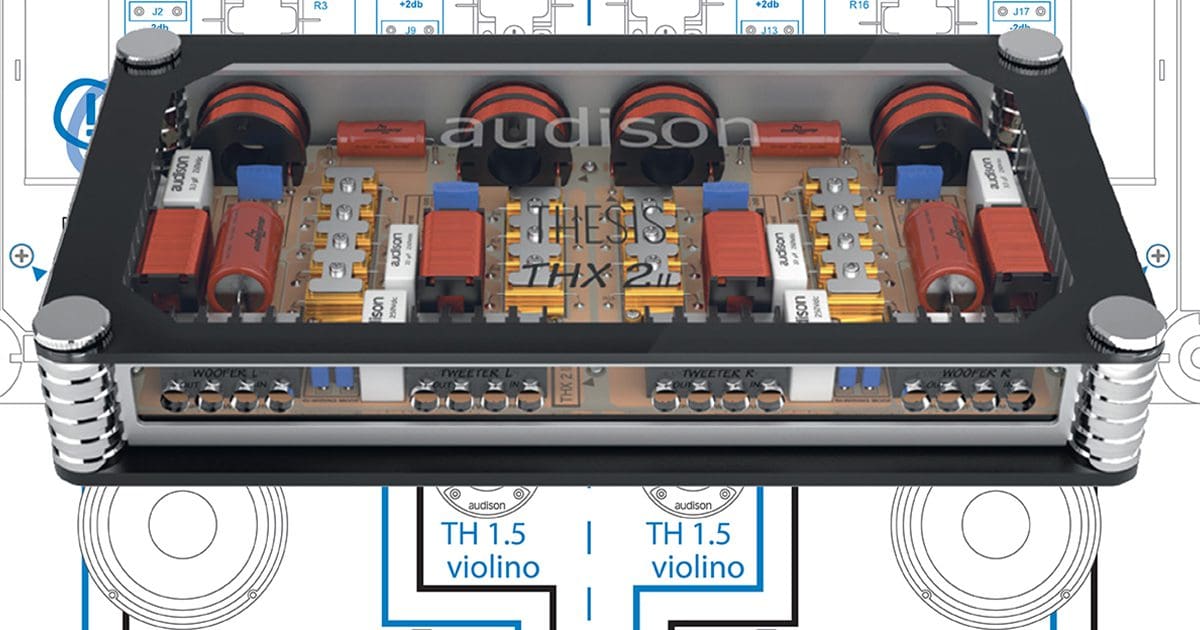While it’s fun to talk about the more complex car audio systems that include digital signal processors and have an amplifier channel dedicated to each speaker, the reality is that most car audio systems use speaker systems that include passive crossovers. We’ve repeatedly discussed the importance of having your car audio system calibrated after the installation is complete to ensure that it delivers the smoothest frequency response possible. Let’s look at how bi-ampable passive crossovers make this process much easier.
What Is a Passive Crossover Network?
A passive crossover can be as simple as a capacitor wired in series with a tweeter to block midrange information. At the other end of the spectrum, we have complex circuits with capacitors, inductors and often resistors on as many as three speakers to divide the audio signals from an amplifier. Take, for example, a three-way speaker set that includes woofers, midrange speakers and tweeters. Each driver must operate within a specific range of frequencies for the system to perform correctly.
The engineers who design these crossovers need to consider the operating limits of the speakers and the driver’s impedance around the crossover point. They must also determine how the drivers will be installed in the vehicle. For example, a passive crossover network designed to have a tweeter right beside a midrange driver would be different from one where the woofer is in the door and the tweeter is in the dash or on the sail panel.
Most passive crossover network designs have a single set of input terminals from an amplifier and outputs for a woofer and a tweeter. In all, they have six terminals. Some include jumpers or switches inside the chassis that allow your installer to adjust the tweeter output level by +2 or -2 dB to compensate for different installation locations. For example, if you have the tweeters mounted way out at the base of the windshield, you may want the +2 dB setting. If they’re mounted in the doors much closer to the listening position, then the -2 dB setting might be better. Ultimately, there’s only one “perfect” setting for the tweeter level such that they blend perfectly with the midrange output. This is where crossovers with bi-amp capabilities come into their own.
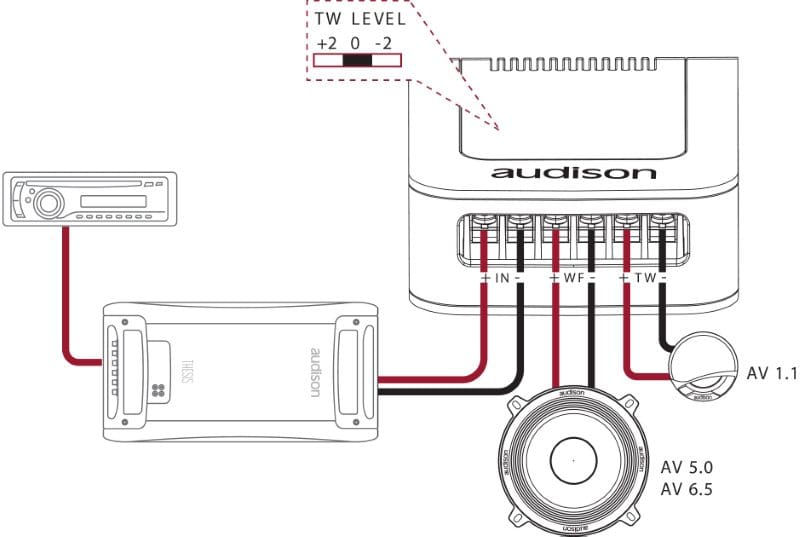
The crossover networks we just discussed use a single channel from an amplifier and divide the audio signal into bands appropriate for a woofer and tweeter. In the case of a bi-ampable crossover design, there are dedicated inputs on the crossover for the woofer and a second set for the tweeter. Your installer can connect to a single amplifier channel or use a second amp channel, dedicating one to the woofer and the other to the tweeter. The benefit of having two amplifier channels is that the sensitivity control on the amp can be used to fine-tune the tweeter level for perfect balance at the crossover point.
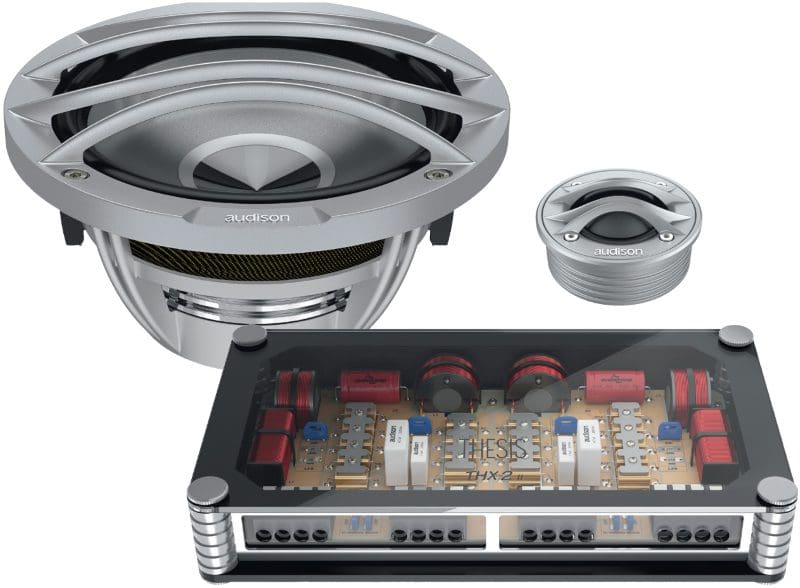
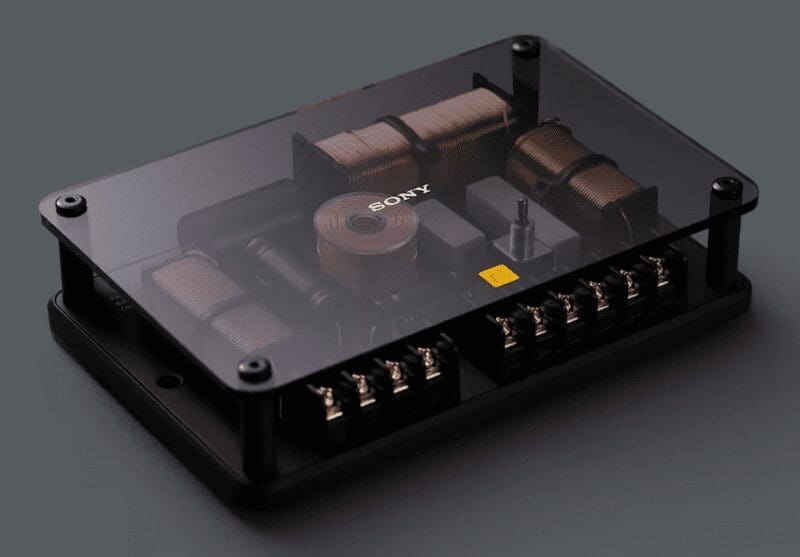
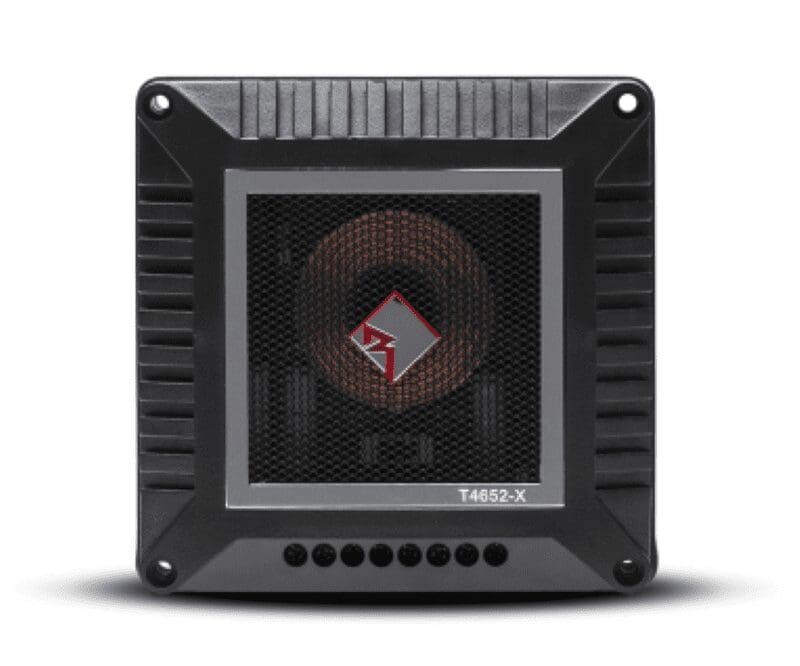
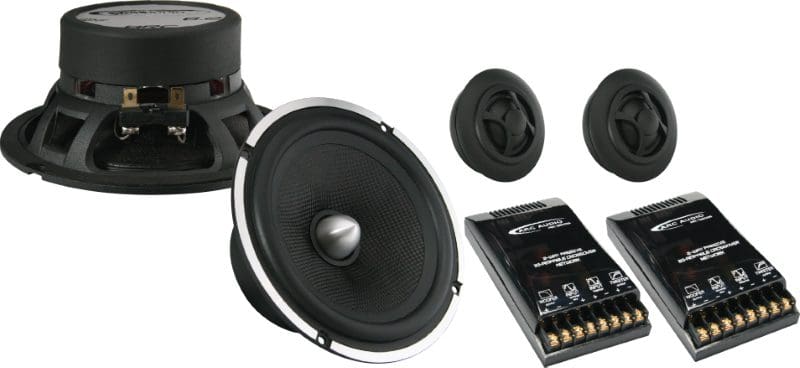
Getting the Most from a Speaker Upgrade
Any time new speakers are installed in a car audio system, the technician working on the vehicle should use a real-time audio analyzer to check that the frequency response at the listening position is as smooth as possible. If the system includes passive crossovers on the speakers, the technician needs access to the crossover networks to fine-tune the tweeter levels to blend with the midrange drivers.
This process is one of the key reasons why passive crossovers should never be installed in the vehicle’s doors. If the networks are bi-ampable, the tweeter-to-midrange level adjustment can be done at the amplifier. One thing you don’t want to see is the treble control on the radio adjusted to compensate for improper settings on the crossover.
When it’s time to upgrade your car stereo system, drop by a local specialty mobile enhancement retailer and audition some of their demo vehicles. If you’re impressed with the performance of the sound systems, talk about upgrading your vehicle with new speakers and amplifiers.
